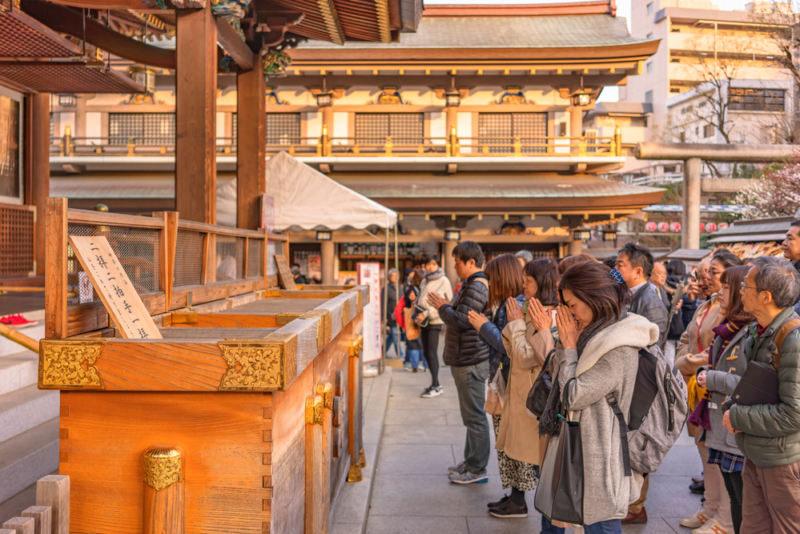Shrines are places revered in the Shinto religion in Japan since time immemorial as places where gods are deified. An easy way to identify them is that a shrine will always have one of the famous torii gates. If you go to pray at a shrine, here is how to properly pray and respect the shrine!
1. Bow at the Torii Gate
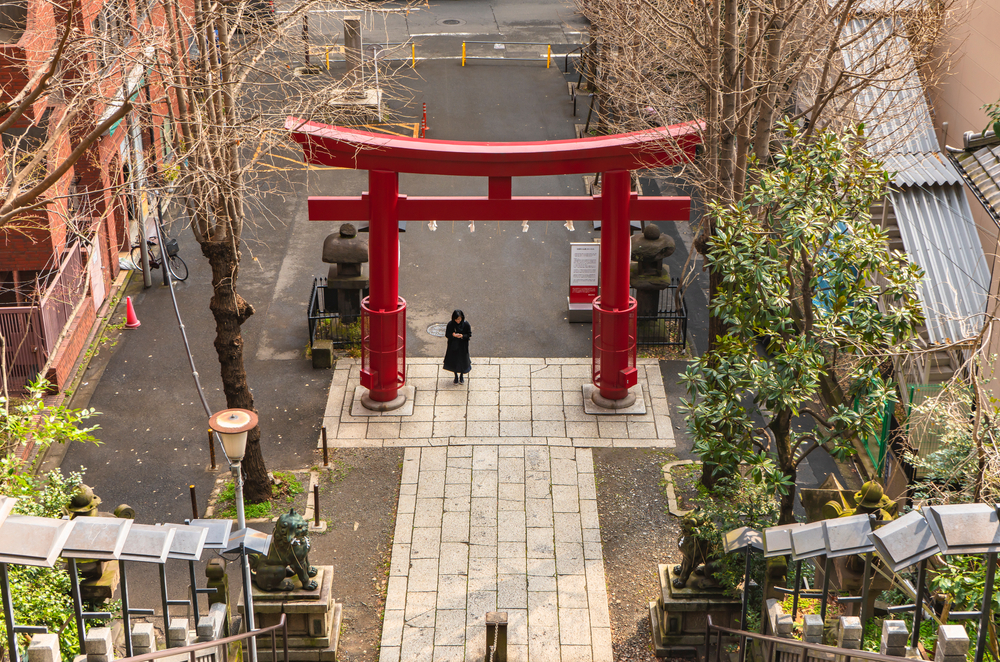
There is always a torii gate at the entrance of a shrine. The very front of the shrine has the “ichi no torii” (the first torii) and you walk through it to get to the “sando,” the road approaching the shrine. Avoid walking in the center of the torii, and instead, stick close to the sides near one of the pillars. Stop and bow before you walk through.
2. Don’t Walk in the Center of the Sando
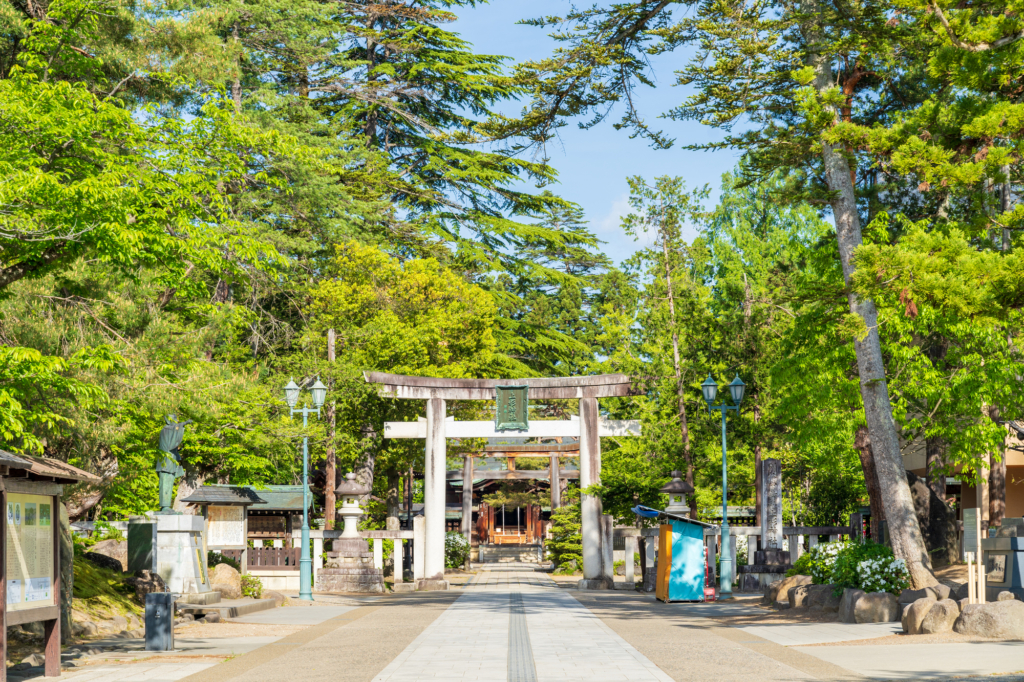
When you walk up the sando (path leading to the shrine), do not walk in the center. The center of the sando is called the “seichuu,” and it’s where the gods walk. We should not be walking there. Also, while you’re on shrine grounds, do not speak loudly.
3. Cleanse Your Mouth and Hands at the Temizuya
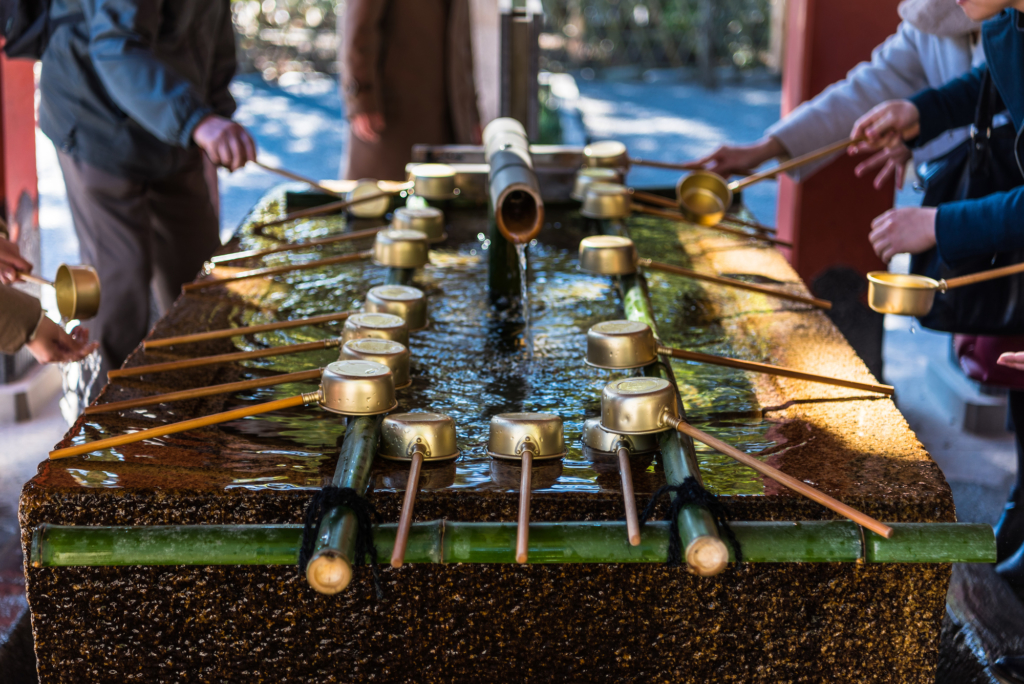
There is a vessel called the “temizuya” or “chomizuya” on the side of the sando as you head up to the shrine, at which you can purify yourself. First, take the ladle in your right hand, scoop up some water, and clean your left hand with it. Then, you switch the ladle to the left hand, and cleanse your right hand. Third, you put the ladle back into your right hand and scoop up more water with it. Cup your left hand and pour some water into it; with that you will cleanse your mouth. Do not put the ladle up to your mouth, make sure to ONLY use your hand. When you’re done rinsing your mouth, once again clean your left hand using water from the ladle. Finally, lift the ladle so the remaining water streams down the handle before putting it back in its place against the temizuya. Remember to do all of this away from the water in the temizuya so that the water you are using does not splash back into the water.
4. Ring the Bell Before Praying
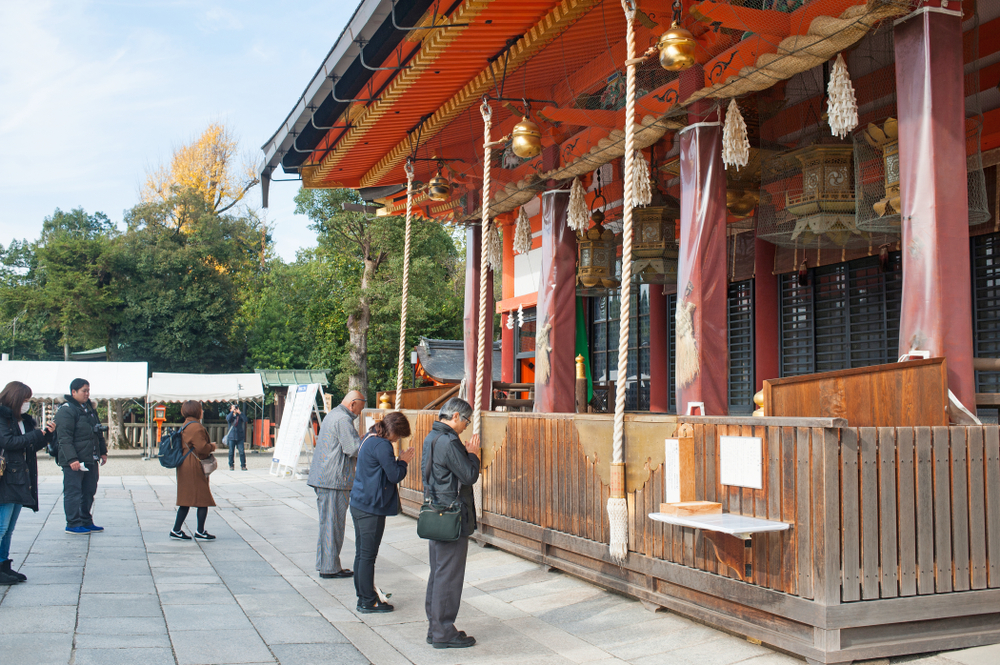
When you get to the front of the main shrine, don’t stand in the middle. This is for the same reason you shouldn’t stand in the middle of the sando. Then, bow once. If there’s a bell, ring it. It’s how you inform the gods that you’ve come to visit.
5. Make a Monetary Offering Before Praying
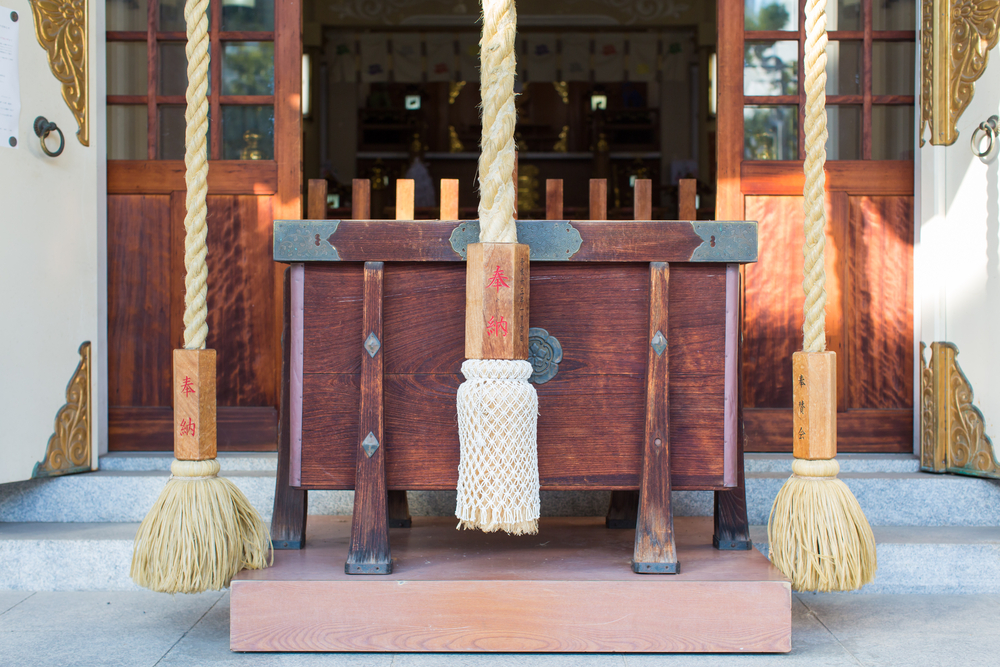
Don’t just throw your offering into the box, put it in as quietly as possible without disturbing whatever barriers may be set up. There is no set amount you should give. Anything you’d like – 1 yen or even 10,000 yen – whatever you want to give is fine. It’s said that 5 yen is the luckiest because it sounds the same as the word for “bond” (as in a relationship or meeting people), but it’s up to you.
6. When You Pray, Bow Twice, Clap Twice, Then Bow Once More
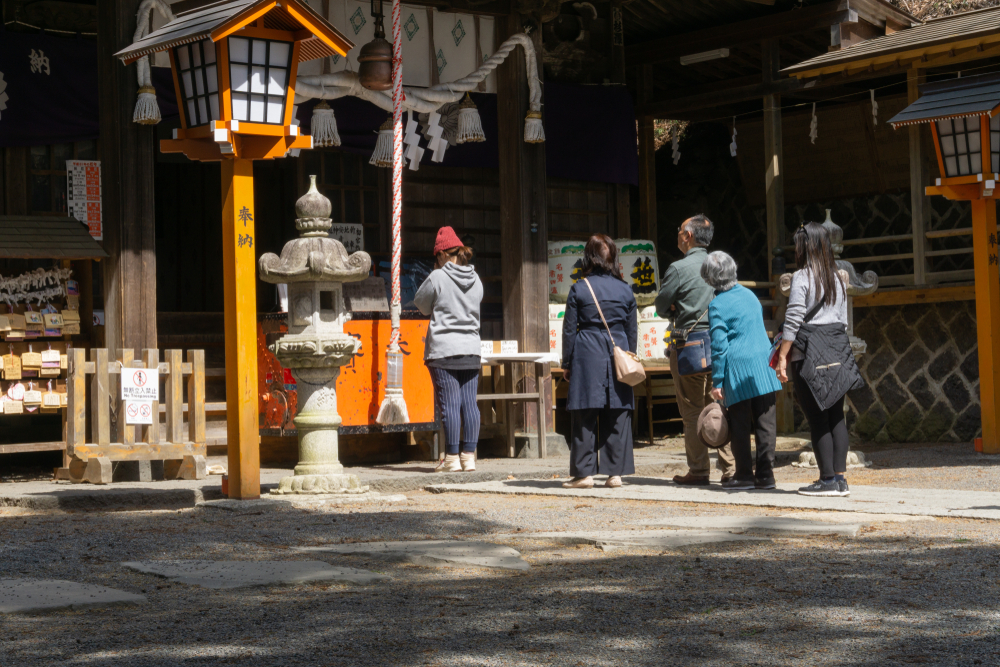
First, when you bow twice, face the shrine and you bow deeply until your back is flat and your hips are at a 90-degree angle. When you clap, make sure that your palms meet but that your right hand sits a little below your left. Open your hands as wide as your shoulders and clap twice. Then bring your hands together, and lower your hands while you pray. After you finish praying, bow deeply once more. Depending on the shrine, there may be a different process (for example, at the Izumo Taisha Grand Shrine in Shimane, it’s two bows, four claps, one bow).
7. How to Structure Your Prayer
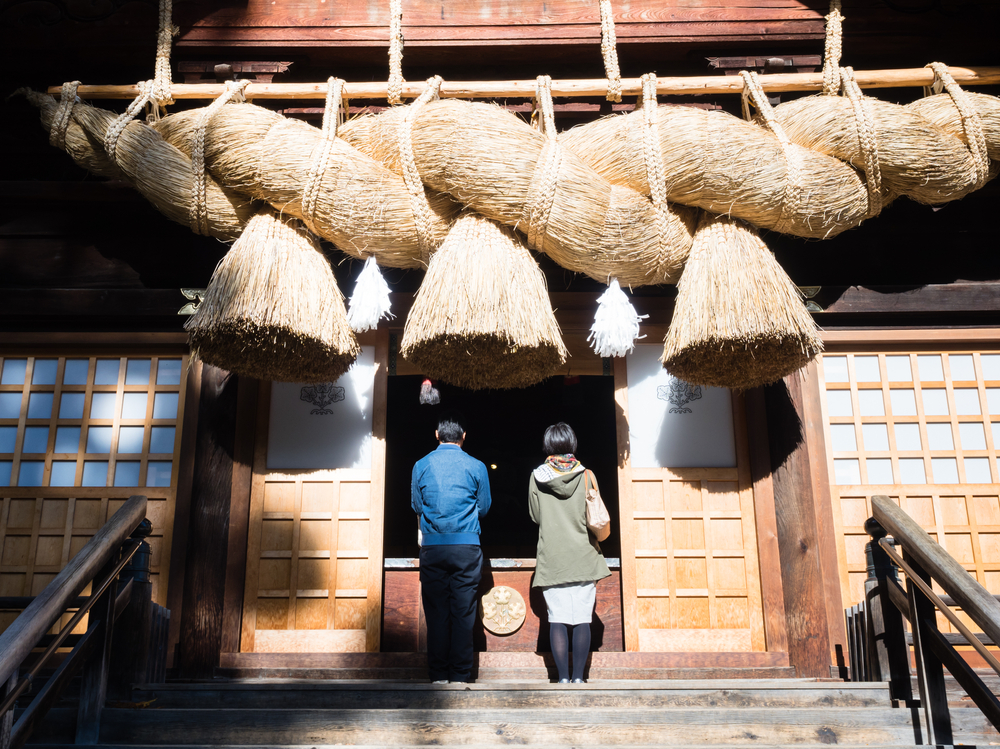
If it’s your first time at a shrine, you should start with your name, address, and the gratitude you have for being able to pray. After that, for the rest of your visits, you can simplify your introduction.
8. Pull an Omikuji Fortune
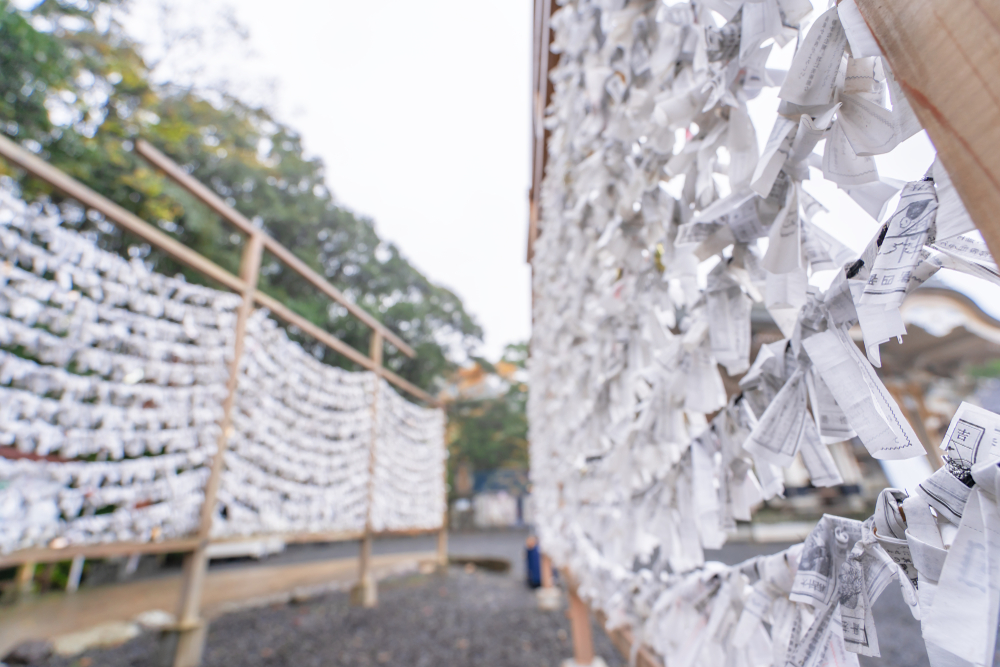
If you pull a fortune that is not good or not as high as what you wanted, tie it up in order to exorcise the bad luck. If you pull a good fortune, there is no need to tie it. Also tying it to a tree on the grounds, it hurts the tree, so please refrain from doing that. There are usually places specifically for tying up the omikuji, so only use that for your fortunes.
9. Write an Ema
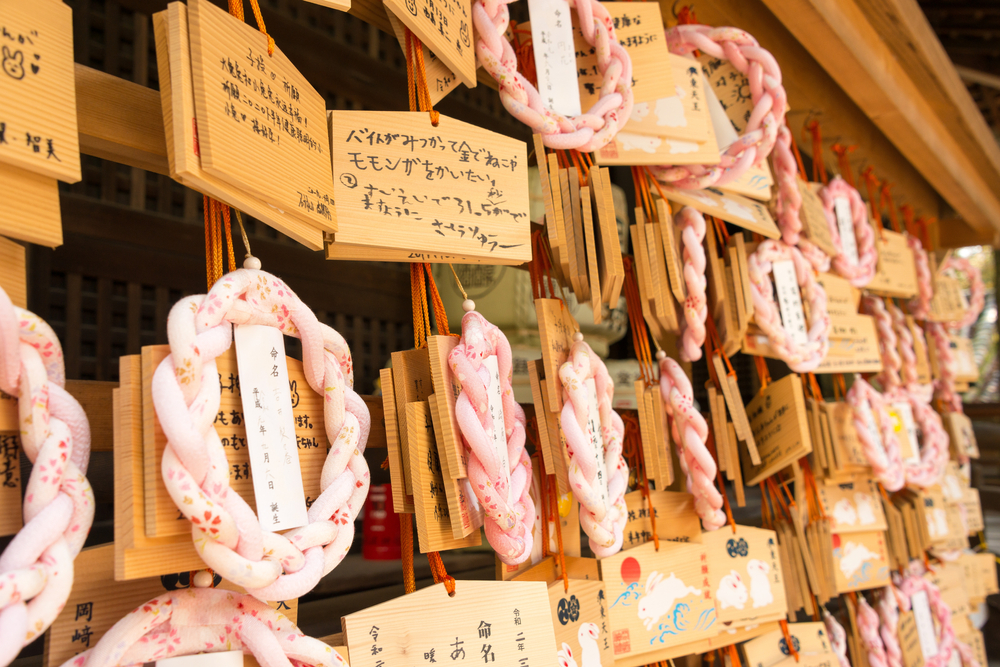
In ancient times, it was thought that gods rode horses, so originally real horses were used as offerings. However, now “ema” are used; these are wooden votive blocks with the name made up of the characters for “picture” and “horse.” When you go to pray at a shrine or temple, you can pray by writing your wishes on an ema and turning it into an offering by tying it to the specified area.
10. When You’re Done Praying
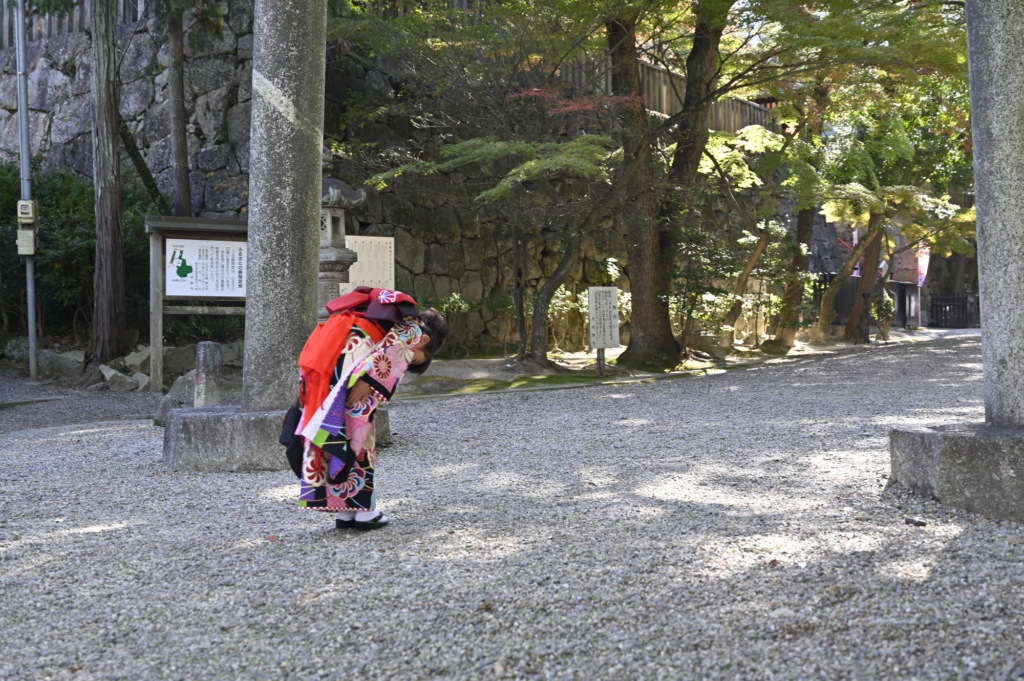
When you pass through the torii gates on your way out, make sure to turn around and bow once more towards the shrine. The most important thing to do when you pray at a shrine is to offer words of gratitude to the gods.
By the way, the biggest difference between a shrine and a temple is the way you pray. At a shrine, you clap your hands, but at a temple, you simply bring your hands together and can chant your prayer.
Conclusion
Do you feel more confident in being able to try your hand at praying at a Japanese shrine? Be sure not to miss out on this spiritual experience!
Cover Photo: kuremo / Shutterstock.com
If you want to give feedback on any of our articles, you have an idea that you’d really like to see come to life, or you just have a question on Japan, hit us up on our Facebook!
The information in this article is accurate at the time of publication.
